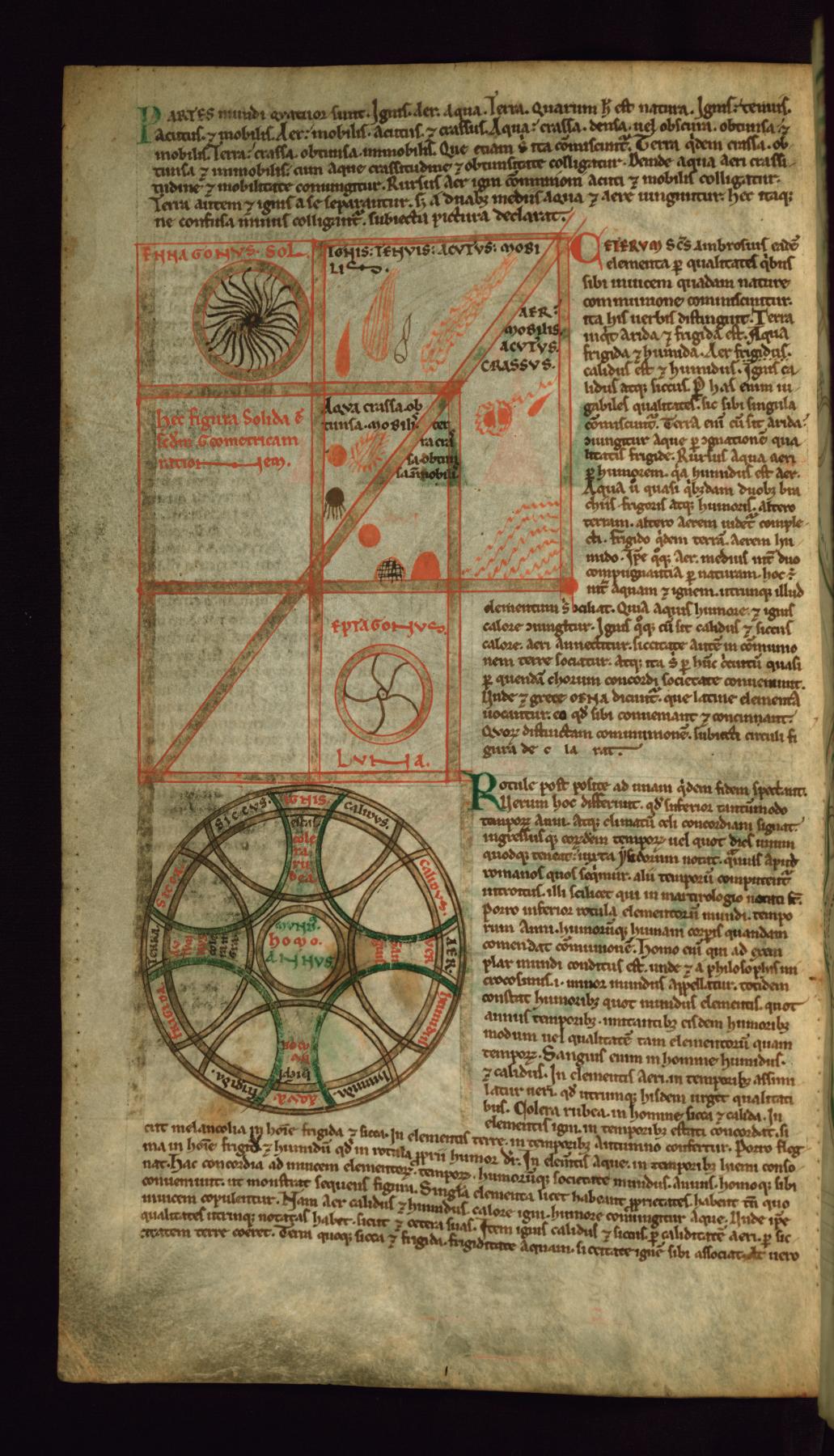Diagrams of a Cube, and the Microcosmic-Macrocosmic Harmony
(Manuscripts and Rare Books)
Two overlapping squares with a common diagonal create the cube in the upper diagram. The Sun is portrayed in the upper left corner, the Moon in the lower right. The four elements, Earth, Air, Fire, and Water, along with their respective properties, occupy the cube's upper square. The wheel-shaped diagram in the bottom part of the page visualizes the idea that Man is a microcosm of the universe, and the universe a macrocosm of Man. Within the ring at center are the words (reading from top to bottom) "World," "Man," and "Year." The eight intersecting arcs illustrate the relationships among the parts of the world – the four elements, the four bodily humors, and the four seasons. The cross shape created by the arcs expresses Christ's role in restoring to nature its original harmony, order, and meaning, believed to have been disrupted by the Fall of Man.
Provenance
Provenance (from the French provenir, 'to come from/forth') is the chronology of the ownership, custody, or location of a historical object. Learn more about provenance at the Walters.
Gruel and Englemann Collection, Paris [1]; acquired by Henry Walters, Baltimore, 1903; by bequest to Walters Art Museum, 1931.
[1] no. 131, bookplate on inside upper board
Exhibitions
| 1986 | Text and Image: Medieval Book Illustration. The Walters Art Gallery, Baltimore. |
Geographies
United Kingdom, England (Place of Origin)
Measurements
H: 10 1/2 × W: 6 1/8 in. (26.7 × 15.5 cm)
Credit Line
Acquired by Henry Walters, 1903
Location in Museum
Not on view
Accession Number
In libraries, galleries, museums, and archives, an accession number is a unique identifier assigned to each object in the collection.
In libraries, galleries, museums, and archives, an accession number is a unique identifier assigned to each object in the collection.
W.73.7V



